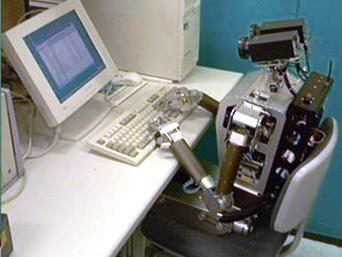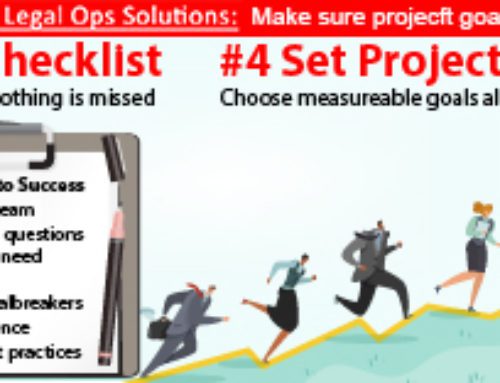 With legal technology evolving faster than a speeding bullet, it becomes increasingly difficult to keep up with all of the advances in functionality. The area where electronic discovery is advancing at a torrid pace is document review. The sides are being drawn already regarding Advanced Analytics vs. Technology Assisted Review (TAR). Twenty years ago, document review meant sending a few people to read boxes and boxes of paper to extract those documents that were relevant to the case. Today, the end result remains the same, but the process to get us there is far more ”intelligent.” For better or worse, electronically stored information (ESI) is here, and it is only going to increase, exponentially with the birth of Big Data.
With legal technology evolving faster than a speeding bullet, it becomes increasingly difficult to keep up with all of the advances in functionality. The area where electronic discovery is advancing at a torrid pace is document review. The sides are being drawn already regarding Advanced Analytics vs. Technology Assisted Review (TAR). Twenty years ago, document review meant sending a few people to read boxes and boxes of paper to extract those documents that were relevant to the case. Today, the end result remains the same, but the process to get us there is far more ”intelligent.” For better or worse, electronically stored information (ESI) is here, and it is only going to increase, exponentially with the birth of Big Data.
Adanced Analytics vs. TAR
To combat this ever-growing mountain of digital information, technology companies and discovery vendors are constantly seeking ways to increase efficiency, adjust workflow, and decrease the bottom line. However, the human eye can only read so fast, and selecting which documents are responsive can’t be sped up… or can it? The hottest topics in the eDiscovery sphere are undoubtedly advanced analytics and technology assisted review (TAR). While the result of increasing the speed of document review is the goal, it cannot come at the expense of quality. It is important to understand these topics function separately and are not one in the same. advancing at a torrid pace is document review.
1. Advanced Analytics
This concept has several primary functions. Near-duplicate detection and email threading are two common well-known functions that analytics delivers. What’s important to know is, if two documents are exactly the same, they will de-dupe out based on their MD 5 hash values being identical. However, if one document is a PDF and the other is Word document, MD 5 hash will not recognize these as duplicates, but analytics will. It recognizes the words on the page, rather than an algorithm to develop a hash value. This allows for more consistent coding without having to review email after email where only a few words have been changed. Similarly, with email threading, one can review the entire email chain, and code it as responsive or not at the push of a button. This saves time, money, and cuts down on reviewer fatigue.
Clustering is another extremely useful feature. By organizing the data upon loading into a review platform, it gives the user a look into how the documents are related. If you see a set of related documents whose heading is “fantasy football, running stats, MVP” you probably know those documents aren’t as important if your case is dealing with electrical engineering. In this case, you can prioritize your review by the clusters that you feel are pertinent to your case. Another great way to use this feature is by batching a review based on specialty. If you have a reviewer who specializes in economics and business, it might be a good idea to batch those documents having to deal with the Stock Exchange to that reviewer to ensure accuracy and efficiency.
The days of simply searching for keywords and their synonyms are over with the advent of concept searching. By inputting a concept, a reviewer can get results that expand on the idea, returning documents that focus on that concept. For example, if a reviewer searches for the concept “confidential information” it will bring back all documents that relate to data that could potentially be privileged, or documents that were supposed to be kept hidden. These features differ greatly from TAR, because TAR deals with coding documents, whereas analytics focuses on organizing the data strategically.
2. Technology Assisted Review (TAR)
With TAR, a single reviewer is coding a sample set of documents for a particular issue or idea. Once the sample set for that issue has been completed, the software runs the coding of the sample set against the rest of the data and determines how best to code the remaining document set.
Technology Assisted Review software “learns” the document set more completely as the reviewer continues to code the sample set. In a sense, this is an intelligent automatic review where human reviewers are used only to build an adequate review sample set. As that set grows, the next documents benefit from this expanded sample to better predict how the codes of the remaining documents will be handled. The goal is to find the sweet spot where you review only enough documents to ensure your sample provides enough for the software to code the remaining documents correctly. Fortunately, TAR software is designed to let the reviewer know when this goal has been attained, typically providing any number of fail-safes. This is a huge time saver, which leads to greater cost savings.
Why Choose?
The purpose here is to quickly highlight the main differences when considering Advanced Analytics vs. TAR. As previously mentioned, analytics are helpful when performing a manual review to organize, prioritize, and sift through data that was previously not possible in a linear format. No longer must reviewers read documents that are completely unrelated to each other, and jump from topic to topic. There are countless benefits to utilizing advanced analytics that do not come with the same stigma of “a computer is doing my thinking for me” that TAR yields. However, both technologies impact the review process.
We’re in an eDiscovery “Analtyics vs. TAR” culture that expands and advances each day. Newer technology is only just the beginning as we decide how best to apply it in innovative ways. To embrace technology assisted review, the first step towards leveraging technology to help might be to utilize analytics. In doing so, you can accomplish two main goals: risk reduction and improved client satisfaction. The idea of which to choose comes down to, “What are your goals?” Once set, the goals drive what review technology or method you put into action. To learn more about legal technology aimed at improving your complex multi-lingual eDiscovery efficiency while lowering your costs, check out our eDiscovery page to learn more.






